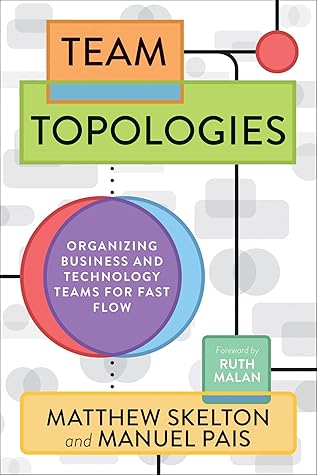More on this book
Community
Kindle Notes & Highlights
Read between
March 30 - December 9, 2024
To sustain a fast flow of software changes, organizations must invest in organizational sensing and cybernetic control.
Instead of trying to optimize for lowest cost in so-called “maintenance” work, it is essential that organizations use signals from maintenance work as input to software-development activities.
The Three Ways of DevOps for modern, high-performing organizations:9 Systems thinking: optimize for fast flow across the whole organization, not just in small parts Feedback loops: Development informed and guided by Operations Culture of continual experimentation and learning: sensing and feedback for every team interaction
Increasingly, software is less of a “product for” and more of an “ongoing conversation with” users. To make this ongoing conversation effective and successful, organizations need a “continuity of care” for its software.
How can we encourage teams to continue to care about the software long after they have finished coding a feature? One of the most important changes to improve the continuity of care is to avoid “maintenance” or “business as usual” (BAU) teams whose remit is simply to maintain existing software.
it is much more effective to have one team responsible for new services and BAU of an existing system side by side. This helps the team to increase the quality of signals from the older system by retro-fitting telemetry from the newer system and increasing the organization’s ability to sense its environment and self steer
each stream-aligned team should expect to look after one or more older systems in addition to the newer systems they are building and running. This helps them learn about a wider range of user and system behaviors, and avoid repeating mistakes made in earlier systems.
The Team Topologies approach treats the team as the fundamental means of delivery, where a team is not simply a collection of individuals with the same manager but an entity with its own learning, goals, mission, and reasonable autonomy. A team learns and delivers together because when this happens, the results far outperform mere collections of individuals. The team considers not just its code as part of its external “API” but also its documentation, onboarding processes, interactions with other teams in person and via chat tools, and anything else that other teams need in order to interact
...more
Back in 1968, Mel Conway offered superb insight into the relationship between the communication structure of the organization and the resulting system designs, and it has become a powerful enabler (and constraint) for today’s software-rich organizations: “Research which leads to techniques permitting more efficient communication among designers will play an extremely important role in the technology of system management.”
The corollary here is that increased collaboration is not always the same as increased communication. That is, if we know we need to be able to deploy different parts of the system independently, with a short lead time, and we decide to use small, decoupled services in order to do so, we need to make our teams similarly small and decoupled, with clear boundaries of responsibility.
Approaches to building and operating cloud software such as microservices accommodate the need for human-sized chunks of functionality alongside enhanced deployability.
The use of approaches like promise theory (see Chapter 7) can help teams increase their day-to-day practical ownership of code and APIs. Organizations that develop and operate their own software systems must, therefore, set up their organizations radically differently from how it was done in the past.
Team Topologies alone will not produce an effective software-delivery and operations organization. Beyond the structures and dynamics suggested in this book, important additional ingredients of success include: A healthy organizational culture: an environment that supports the professional development of individuals and teams—one in which people feel empowered and safe to speak out about problems, and the organization expects to learn continuously. Good engineering practices: test-first design and development of all aspects of the systems, a focus on continuous delivery and operability
...more
First, as an organization ask yourself: What does the team need in order to: Act and operate as an effective team? Own part of the software effectively? Focus on meeting the needs of users? Reduce unnecessary cognitive load? Consume and provide software and information to other teams? Answering these questions honestly should lead to team-first approaches to office space, developer tooling, usability of platforms, realistic subsystem/domain splitting, team-friendly architecture, rich telemetry, and so forth.
After you have identified the most relevant streams for your organization, identify the services needed to support a reliable, swift flow of change in those streams. In practice, these services will form the platform on which the streams depend, but as we noted in Chapter 5, a platform does not have to be a huge, expensive investment.
the platform will evolve over time as the technology ecosystem evolves. The platform teams may start off needing to build a custom solution for, say, infrastructure provisioning, but a few years later, may discard that work in favor of a newly available, open-source or cloud-provider solution that fits better with industry trends.
In particular, you need people who understand and practice: Team coaching Mentoring (especially of senior staff) Service management (for all kinds of teams and areas, not just for production systems) Well-written documentation Process improvement


